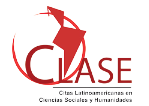Uma investigação teórica sobre relações semânticas partitivas e sua aplicação em sistemas de organização do conhecimento
DOI:
https://doi.org/10.5433/1981-8920.2019v24n2p31Palavras-chave:
Ontologias, Relações Semânticas, Relações Parte-todoResumo
Introdução: Relações semânticas são essenciais para a Representação do Conhecimento, um campo de pesquisa que ganha cada vez mais relevância, principalmente a partir do advento da Web Semântica. A Ciência da Informação tem um longo histórico de estudo e uso de relações semânticas nos diversos contextos em que Sistemas de Organização do Conhecimento (SOCs) são concebidos e construídos. Entretanto, são poucos os estudos pormenorizados sobre a relação semântica parte-todo, também conhecida como relação partitiva. Objetivo: o presente artigo objetiva uma descrição fundamentada da relação partitiva, a partir de abordagem interdisciplinar que envolve suas origens linguísticas e filosóficas. Metodologia: para atingir o objetivo proposto, descrevem-se e caracterizam-se as duas principais formas pelas quais as relações partitivas se manifestam – a meronímia, não formal e linguística; e a mereologia, formal e lógica – distinguindo-as pela propriedade da transitividade. Resultados: a partir da distinção mencionada, sugere-se critério pragmático ao decidir qual abordagem de relação partitiva é adequada quando se constroem ontologias e tesauros. Conclusões: conclui-se, que as relações formais são, de fato, mais restritas, e pode-se mesmo afirmar que estão incluídas nas relações não-formais, mas que o uso das relações formais em ontologias requer cuidados muitas vezes negligenciadas pelos cientistas da informação.
Downloads
Referências
BITTNER, T. Mereology 2. 2011. Disponível em: http://ontology.buffalo.edu/smith/courses03/tb/Mereology2.pdf. Acesso em: 15 ago. 2010.
BIEDERMAN, I.A Recognition-by-Components: a theory of human image understanding. Psychological Review, v. 94, p.115-147, 1987.
BIERWISCH, M.; HEIDOLPH, K. E. Progress in linguistics: a collection of papers. The Hague: Mouton Publishers, 1970.
CHAFFIN, R.; HERRMANN, D. J.; WINSTON, M. An empirical taxonomy of part-whole relations: effects of part-whole type on relation identification. Language and Cognitive Processes, v. 3, n.1, p. 17-48, 1988.
CROFT, W.; CRUSE, D. A. Cognitive Linguistics. Cambridge: Cambridge University Press, 2004.
CRUSE. D. A. Lexical semantics. Cambridge: Cambridge University Press, 1986
CRUSE, D. A. On the transitivity of the part-whole relation. Journal of Linguistics, v. 15, n. 1, p. 29–38, 1979.
FLAVELL, J. H.; MARKMAN, E. M. Cognitive development. New York: Wiley, 1983.
GERSLT, P.; PRIBBENOW, S. Midwinters, end games and body parts: a classification of part-whole relations. Int. J. Human-Computer Studies, v. 43, p. 865-889, 1995. Disponível em: http://www.ontology.buffalo.edu/smith/courses03/tb/PribbenowMidwinters.pdf. Acesso em: 12 fev. 2013.
GOTTS, N. M.; COHN, A. G. A mereological approach to representing spatial vagueness. School of Computer Studies, s.n, p. 246-255. 1995. Disponível em: http://www.qrg.northwestern.edu/papers/Files/qrworkshops/QR95/Gotts_poster_1995_Mereological_Approach_Spatial_Vagueness.pdf. Acesso em: 5 abr. 2013.
GUIZZARDI, G. The problem of transitivity of part-whole relations in conceptual modeling revisited. 2009. Disponível em: http://www.inf.ufes.br/~gguizzardi/CAISE2009CR.pdf. Acesso em: 6 abr. 2013.
HJORLAND, B. Semantics and knowlegde organization. Annual Review of Information Science and Technology, v. 41, n.1, p. 367-405, 2007.
JANSEN, L. Categories: the Top-Level Ontology. In: SMITH, B.; MUNN, K. (Ed.). Applied Ontology: an introduction. Frankfurt: Ontos Verlag, 2008. p. 173- 196.
JOHANSSON, I. On the transitivity of the parthood relations, 2004. Disponível em: http://hem.passagen.se/ijohansson/function2.PDF. Acesso em:12 maio 2018.
KEET, C. M.; ARTALE, A. Representing and reasoning over a taxonomy of part-whole relations. Applied Ontology, v. 3, n. 1, p. 91-110, 2008.
KHOO, C. S. G.; NA, J. Semantic relations in Information Science. Annual Review of Information Science and Technology, v. 40, n.1, p.157-228, 2006.
LEONARD, H. S.; GOODMAN, N. The calculus of individuals and its uses. Journal of Symbolic Logic, v.5, n. 2, p. 45-55, 1940.
LEŚNIEWSKI, S. Foundations of the general theory of Sets I. In: LEŚNIEWSKI, S., SURMA, S. J.; SRZEDNICKI, J.; BARNETT, D. I.; RICKEY, F. V. (Ed.). Collected Works. Dordrecht: Kluwer, p. 129-173, 1992.
LYONS, J. Semantics: volume 1. Cambridge: Cambridge University Press. 1977.
LYONS, J. Introduction to theoretical linguistics. Cambridge: Cambridge University Press, 1968.
MILLER, G. A.; JOHNSON-LAIRD, P. N. Language and perception. Cambridge: Belknap Press, 1976.
MORRIS, M. An introduction to the Philosophy of Language. Cambridge: Cambridge University Press, 2007.
MURPHY, M. L. Semantic relations and the lexicon: antonymy, synonymy, and other paradigms. Cambridge: Cambridge University Press, 2003.
PRIBBENOW, S. Meronymic relationships: from classical mereology to complex part-whole relations. In: GREEN, R.; BEAN, C.A.; MYAENG, S.H. (eds.). The semantic of the relationships: an interdisciplinary perspective. Dordrecht: Kluwer Academic Publishers, 2002, p. 35-50.
RESCHER, N. Axioms for the part-whole relation. Philosophical Studies, v. 6, p. 8-11, 1955.
SCHULZ, S.; STENZHORN, H.; BOEKER, M.; SMITH, B. Strenghts and limitations of formal ontologies in the biomedical domain. Reciis-Electronic Journal of Communication, Information and Innovation in Health, v. 3, n. 1, p. 31-45, 2009.
SIMONS, P. Parts: a study in ontology. Oxford: Oxford University Press, 1987.
SMITH, B. Ontology and Logistic analysis of reality. 1993. Disponível em: http://ontology.buffalo.edu/smith/articles/Olar.pdf. Acesso em: 3 dez. 2009.
SMITH, B.; KUNNE, W. Parts and moments: studies in logic and formal ontology. Munich: Philosophia Verlag, 2004.
SMITH, B.; MUNN, K. Applied ontology: an introduction. Frankfurt: Ontos Verlag, 2008.
SOUZA, R. R; TUDHOPE, D.; ALMEIDA, M. B. Towards a taxonomy of KOS: dimensions for classifying knowledge organization systems. Knowledge Organization, v. 39, n. 3, p. 179-200, 2012.
STOCK, W. G. Concepts and semantic relations in information science. Journal of the American Society for Information Science and Technology, v. 61, n. 10, p. 1951-1969, 2010.
TVERSKY, B. Where partonomies and taxonomies meet. In: TSOHATZIDIS (ed.). Meanings and prototypes: studies on linguistic categorization. London: Routledge, 1990. p. 334-344.
TVERSKY, B.; HEMENWAY, K. Objects, parts and categories. Journal of Experimental Psychology: General, v. 113, n. 2, p. 169-193, 1984.
VARZI, A. C. Mereology. 2009. Disponível em: http://plato.stanford.edu/entries/mereology/. Acesso em: 20 dez. 2012.
VARZI, A. C. Parts, wholes, and part-whole relations: the prospects of mereotopology. Data and Knowledge Engineering, v. 20, n. 3, p. 259-286, 1996.
VARZI, A. C. A note on the transitivity of parthood. Applied Ontology, v.1, n. 2, p. 141-146, 2006.
WANNER, L. Lexical functions in lexicography and natural language processing. Amsterdan: John Benjamins Publishing, 1996.
WELLER, K.; STOCK, W. G. Transitive meronymy: automatic concept-based query expansion using weighted transitive part-whole relations. Information - Wissenschaft & Praxis, v. 59, n. 3, p. 165-170, 2008.
WINSTON, M. E.; CHAFFIN, R.; HERRMANN, D. A taxonomy of part-whole relations. Cognitive Science, v. 11, p. 417-444, 1987.
Downloads
Publicado
Como Citar
Edição
Seção
Licença
A revista se reserva o direito de efetuar, nos originais, alterações de ordem normativa, ortográfica e gramatical, com vistas a manter o padrão culto da língua e a credibilidade do veículo. Respeitará, no entanto, o estilo de escrever dos autores. Alterações, correções ou sugestões de ordem conceitual serão encaminhadas aos autores, quando necessário.
O conteúdo dos textos e a citação e uso de imagens submetidas são de inteira responsabilidade dos autores.
Em todas as citações posteriores, deverá ser consignada a fonte original de publicação, no caso a Informação & Informação.
















